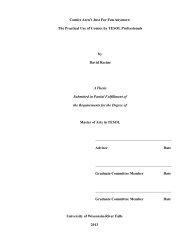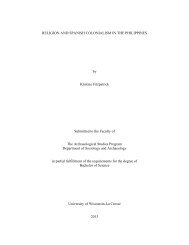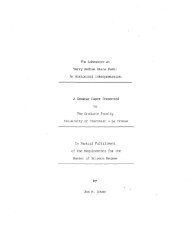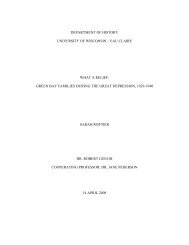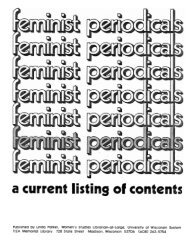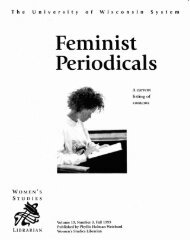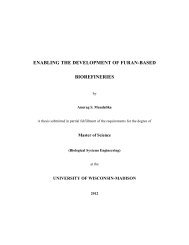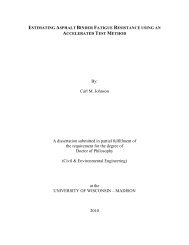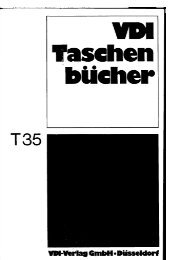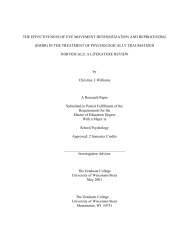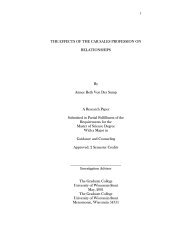William Stratton Ph.D. Thesis - MINDS@UW Home
William Stratton Ph.D. Thesis - MINDS@UW Home
William Stratton Ph.D. Thesis - MINDS@UW Home
Create successful ePaper yourself
Turn your PDF publications into a flip-book with our unique Google optimized e-Paper software.
enabling us to make statements on how a different FEM results relate to changes in the sample<br />
structure of high Al content amorphous alloys.<br />
FEM on multiple high Al-content metallic amorphous alloys (Al92Sm8, Al88Y7Fe5, and<br />
Al88Y7Fe4Cu1) found Al-like MRO present in the as quenched state of these materials.<br />
Experiments on the deformation induced alloy Al92Sm8 found a different type of MRO, which<br />
implies that the Al-like MRO in the as quenched material is associated with the devitrification<br />
reaction of high Al-content amorphous alloys. Using our FEM theory, we determined that the<br />
crystal Al-like volume fraction increases 60% when Al88Y7Fe5 is alloyed with Cu. This is<br />
correlated with a measured increase in the crystal volume fraction in Al88Y7Fe5 and<br />
Al88Y7Fe4Cu1 upon devitrification.<br />
Taken together, this work supports the quenched-in nuclei hypothesis for high Al-content<br />
amorphous alloy devitrification. In this picture, small proto-crystals are frozen into the material<br />
during the rapid quench process and later act as nucleation sites for the high density of Al<br />
nanocrystals that form upon devitrification. It is these proto-crystals that we measure with FEM.<br />
This is a crystal growth mechanism rather than a grain coarsening mechanism. As seen by the<br />
FEM results, these proto-crystals can be modified by alloying or processing to tailor the<br />
macroscale properties of the material.<br />
iv



